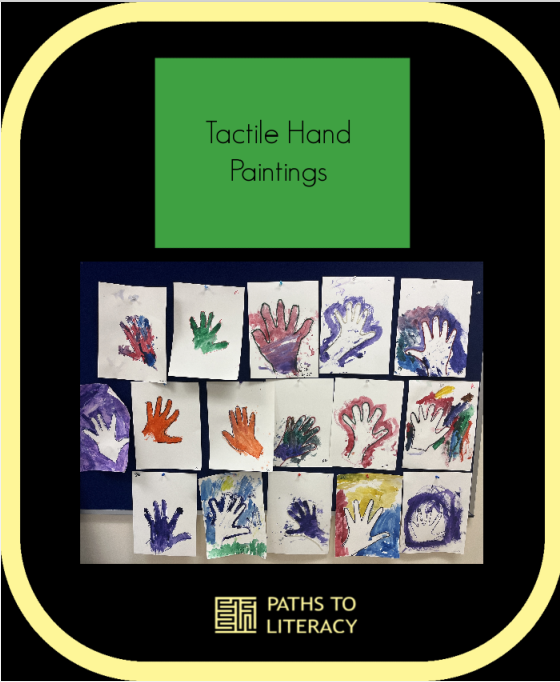Papermaking! Painting! Sculpture! Drawing! The 2024 TSBVI Short-Term Programs class “Fun with Art, Craft, and Fine Motor,” was a fun and engaging way to explore many different ECC (Expanded Core Curriculum) areas. One of the lessons during this class was about hands in prehistoric cave paintings.
Description
In this lesson, students were introduced to one of the elements of art – space. We had a group discussion about prehistoric cave paintings and how hands were a common image in many different caves. They were the original “selfie” or the “I was here” symbol. Students explored a tactile and high-contrast poster to learn about the concept of space – positive and negative.
Space: the whole area on your page where you draw or paint.
Positive Space: the object or subject in your artwork, like the hand.
Negative Space: the area around your object or subject, like the area around your hand.
Students then traced their hands on two different pages of watercolor paper, with some teacher support. Teachers added wikki stix to both hands before students painted them with watercolor paint. Students also had a tray with labeled paints, paintbrushes and a cup of water. Once all of the hands were painted for positive and negative space, students had the choice to have their hand painting cut out to glue on the cover of their handmade art class scrapbooks. Students had fun and really enjoyed this lesson!
Materials
- Poster or example of positive and negative space
- Watercolor paint
- Tray with a cup of water and paper towel
- Paintbrush
- Watercolor paper
- Sharpie
- Wikki sticks
Modifications and Extensions
- A prehistoric cave painting display can be created by crumpling brown paper, attaching it to the wall or bulletin board, and putting hand paintings on it. This simulates the rocky look and feeling of a cave.
- Students can explore other types of cave painting subjects, such as deer, horses or cattle.
- Use a large print or braille ruler to measure their hands for length and width.
- Instead of hands, positive and negative space can be explored by having different wikki stix shapes on a piece of paper. Students could paint the inside and outside of a circle, square, triangle, or any other shape.
- Instead of paint, students could use crayons, markers, or chalk pastels.
- Extend the activity by making braille/large print labels for their painting title and their name.
- Students can practice writing their signature in the bottom corner of their painting using a signature guide.
- Modify this activity by reducing the color choices to two at a time, instead of six at a time.
- Provide physical support by using Hand-Under-Hand while painting.
- For students with low vision, use colored paper for increased visibility.



